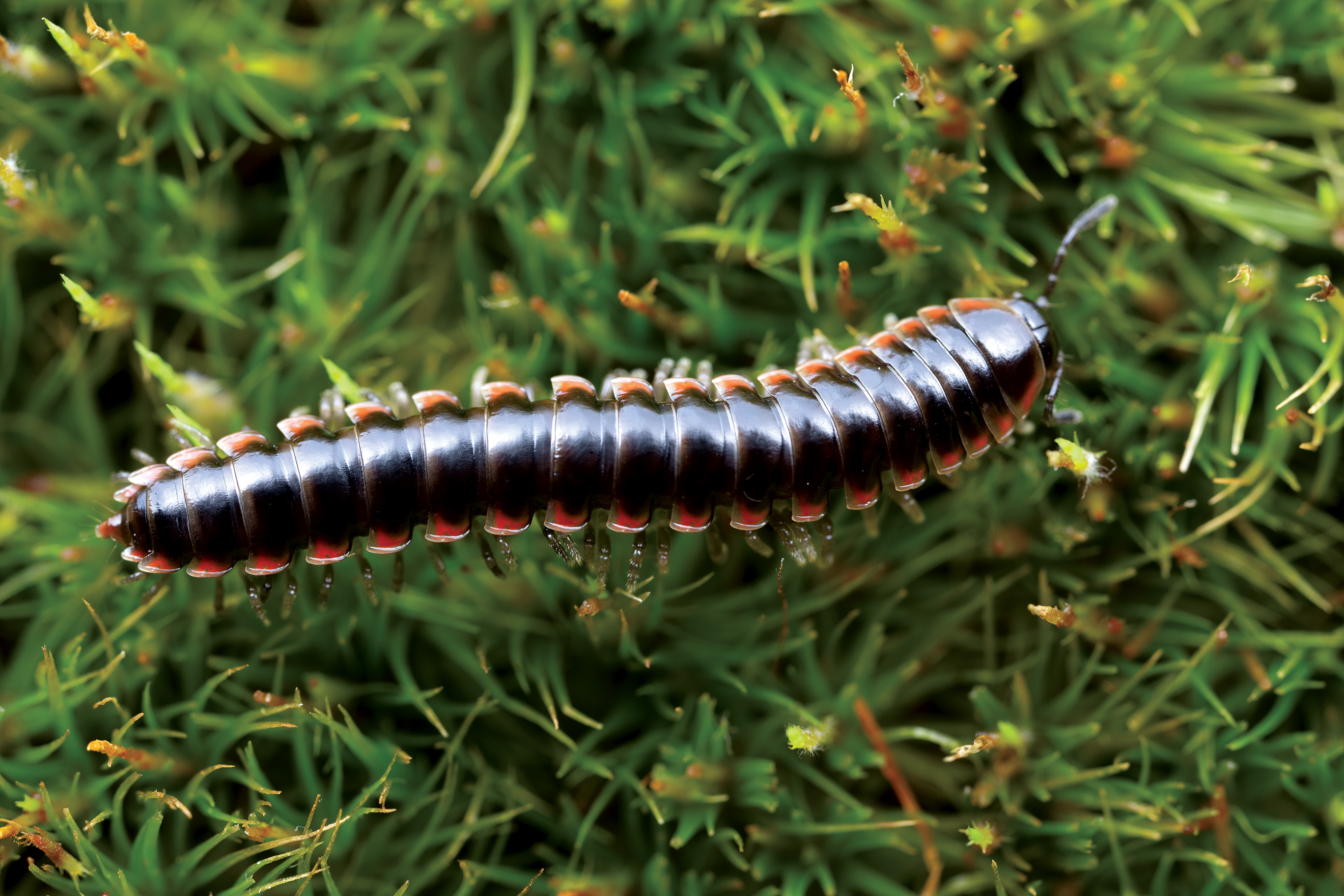
GET BUGGY: Paul Marek, a systematics and taxonomy associate professor, recently discovered a new species of millipede on Virginia Tech's Blacksburg campus. (Paul Marek)
THERE’S A NEW BUG IN TOWN
THERE’S A NEW BUG IN TOWN
HEARING THE WORDS “NEW SPECIES discovered” may conjure images of deep caves, uncharted rainforests, or hidden oases in the desert.
But the reality is that thousands of new species are discovered each year by enterprising scientists all over the world. Many of these new species come from exotic locations, but more surprisingly, many come from just down the road, including the newest member of the Hokie Nation, the millipede Nannaria hokie.
The newest Hokie—which has about 60 more legs than the HokieBird—was first discovered living under rocks by the Duck Pond behind the president’s house on Virginia Tech’s campus. Since then, the critter has been spotted at Stadium Woods and in downtown Blacksburg.
“It’s not every day that we find new species, let alone on our campus, so we wanted to name the new species for the Virginia Tech community and to highlight the importance of conserving native habitat in the region,” said Paul Marek, a systematics and taxonomy associate professor in Virginia Tech’s Department of Entomology in the College of Agriculture and Life Sciences.
Measuring in at about 2 centimeters long, Nannaria hokie (pronounced nanaria ho-key) is a dark, reddish millipede with yellow-white highlights (apologies to those who thought it would be maroon and orange). Roughly the size of a penny, these creatures usually make their homes under rocks and leaves, and among forest floor debris. The name “Hokie twisted-claw millipede” comes from the twisted claws on their feet just before their reproductive organs.
Millipede biodiversity is the primary focus of Marek’s lab, which investigates habitats all over the world, including Vietnam, Japan, and the U. S. Marek, recent entomology graduate Jackson Means, and other co-authors recently published a paper in Insect Systematics and Diversity that describes 10 new species of millipedes, including the Hokie twisted-claw millipede, which was found only a stone’s throw from Marek’s lab window.
The announcement of these new species speaks to the biodiversity that has yet to be discovered, not just in far-off exotic locations, but in the average backyard.
“Millipedes are surprisingly abundant and diverse, yet have thus far avoided major attention from both the scientific community and the public,” Means said.
Millipedes are a unique group of arthropods that are characterized by having two pairs of jointed legs on most segments of their bodies. Some have bright colors, some glow in the dark, and some can even exude cyanide in self-defense. Most millipedes are known as detritivores or decomposers, and feed on decaying plant matter on forest floors.
Despite an ancient lineage and a plentiful food source, changing climate and habitat destruction threatens the existence of many millipede species. Millipedes typically remain confined to select, relatively small geographical regions, due to their limited mobility and their dependency on specific habitats.
Research was supported by a National Science Foundation Advancing Revisionary Taxonomy and Systematics grant.
